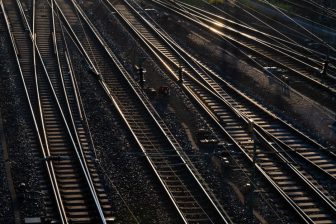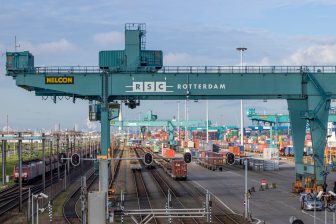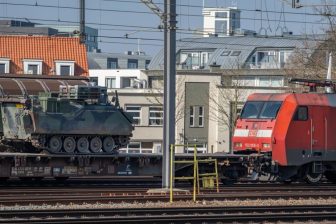Rail freight operators not happy with Dutch new track access charges
Rail freight operators are not happy with the recently approved new calculation method of track access charges in the Netherlands. This calculation method includes new mark-ups, that will especially affect the heavy train operators.
The Dutch ministry of Infrastructure and Water assigned infrastructure manager ProRail with the task of developing a new calculation method of the track access charge. This new calculation method applies to the the minimum access package (VMT), which relates to the direct costs of managing and maintaining the railway network. Furthermore, a new structure was proposed to levy mark-ups varying in height per market segment.
The Authority for Consumers & Markets (ACM) last week approved the methods, but restricted the marginal cost calculation method to a period of three years, subject to certain conditions. It is applicable from 5 December 2019 until 11 December 2022. The mark-ups may be levied for a period of five years, applicable from 2020 till 2024.
Higher or lower?
The track access charge will on average not be very different from what it is today, ProRail said. Although new mark-ups will be levied, the VMT will also be lowered. “Where operators will pay 3 million Euros more in mark-ups, this same amount should be deducted from the VMT, ending up with a zero-sum difference”, the infrastructure manager commented, admitting this could be different per market sector.
The difference is mostly felt by freight operators, as the heavy-weight trains will be charged a lot more: if trains of 1-120 tonnes are charged 1 Euro, trains of 601-1600 tonnes are charged 3.55 Euros, trains of 601-3000 tonnes 4.27 Euros and trains more than 3000 tonnes 4.63 Euros (indicative prices). “The problem here is that more than 80 per cent of rail freight trains are between 600-3000 tonnes, so many rail freight operators will face higher charges than what they used to pay”, explained Hans-Willem Vroon, director of lobby organisation Rail Good.
Market-can-bear test
The calculation method of the Dutch mark-ups was based on the Ramsey-Boiteux principle. The charges depend on the price elasticity of the market: the higher the price elasticity, the lower the charge. The price elasticity is determined with a market-can-bear test. But, the determined price elasticity of the rail freight sector is not realistic, the sector believes.
According to the new calculation method, the price elasticity of the rail freight sector is -1,05, compared to -0,50 for passenger traffic. “This is not realistic at all”, said Vroon. “If you look at Belgium, the price elasticity of rail freight has been between 1.19-1.79.” In Germany, the price elasticity of rail freight is currently determined at 1.32, adds DB Cargo. The Dutch price elasticity does not add up, the German rail freight operator stated in a response to the proposed calculation method.
Level playing field
The rail freight sector of the Netherlands competes heavily with neighbouring Germany, where track access charges will be reduced by half. In response to these measures, the Dutch ministry and the sector came up with a measure package earlier this year. The plan included the ambition to bring charges for the railway network in the Netherlands in line with those in Germany. A grant amount of 12 to 14 million Euros will be made available per year, starting in 2019 and up until 2023. This should lead to a considerable reduction of track access charges from beginning next year, the ministry said when presenting the plan.
These plans remain and are not related to the new calculation method, ProRail explained. Responding to the concern of rail freight operators, secretary of state Stientje van Veldhoven said: “For me, rail freight is a sustainable transport mode which deserves growth. In determining the level of subsidy as part of the measure package, the developments in the Netherlands and surrounding countries were taken into account. In doing this, we create a level playing field for rail freight operators in comparison to the neighbouring countries.”
Calculating track access charges
The European directive (2012/34/EU) establishing a single European railway area compels infrastructure managers to charge train operators for costs that are directly incurred from operating a train service. This happens through the minimum access package (VMT), previously known as users’ charges. In 2015, an Implementing Regulation (EU 2015/909) formulated further rules about how these costs must be calculated. With extra charges, costs that are not part of the VMT are charged to rail operators.
According to the government, mark-ups enable ProRail to present the build-up of track access charges in a more transparent and detailed manner, detailing the costs of management, maintenance and replacement. The new rules should improve management of public funding in this regard and result in a level playing field for the European railway industry, the ministry said earlier.
Also read:





